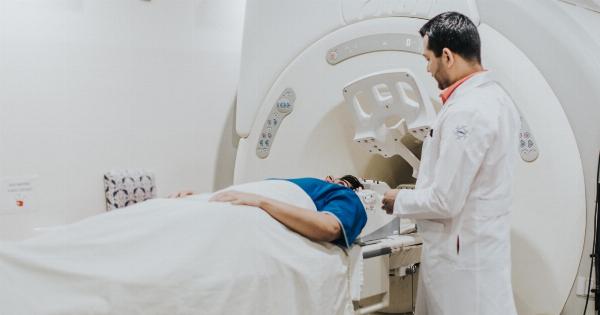Fear is an innate emotion that plays a crucial role in our survival. It triggers a cascade of physiological and psychological responses that prepare us to deal with potential threats or danger.
However, when fear becomes excessive or irrational, it can lead to anxiety disorders, which pose significant challenges to the affected individuals.
Researchers have long been interested in understanding the neural mechanisms underlying fear and anxiety.
Recent breakthroughs in neuroscience have now shed light on a specific brain pathway that can block fear responses, offering hope for the development of new targeted treatments for anxiety disorders. This groundbreaking research holds promising implications for improving the lives of millions of people worldwide.
The Fear Response and its Neurological Basis
The fear response is a complex process that involves multiple brain regions and neural circuits. The amygdala, a small almond-shaped structure deep within the brain, is particularly important in the processing and regulation of fear.
It receives sensory information about potential threats and rapidly triggers fear responses, such as increased heart rate, rapid breathing, and heightened vigilance.
In healthy individuals, fear responses are balanced by another brain region known as the prefrontal cortex (PFC). The PFC is responsible for higher-order cognitive functions, including executive control and decision-making.
It plays a crucial role in regulating and suppressing fear when it is no longer necessary or adaptive.
The Role of the Ventromedial Prefrontal Cortex (vmPFC) in Fear Extinction
Within the prefrontal cortex, a specific area called the ventromedial prefrontal cortex (vmPFC) has recently emerged as a key player in fear extinction.
Fear extinction is a process by which learned fear responses are gradually diminished or extinguished when the threatening stimulus is no longer present or relevant. This form of learning is important in adapting to changing environments and preventing maladaptive anxiety.
Research conducted on rodents and non-human primates has shown that the vmPFC sends inhibitory signals to the amygdala, effectively dampening fear responses.
This inhibitory pathway acts as a “brake” on the amygdala, preventing it from triggering a fear response even in the presence of previously fear-inducing cues or stimuli.
The Medial Prefrontal Cortex (mPFC) and Fear Expression
The vmPFC is interconnected with another region of the prefrontal cortex, known as the medial prefrontal cortex (mPFC).
While the vmPFC is primarily involved in fear extinction, the mPFC is implicated in fear expression and the initial fear learning process.
Studies have shown that the mPFC can modulate the activity of the amygdala, either enhancing or suppressing fear responses. When the mPFC is activated, it can inhibit the vmPFC’s inhibitory signals, leading to an increase in fear expression.
Conversely, when the mPFC is less active, fear extinction processes mediated by the vmPFC are more efficient.
Implications for Understanding and Treating Anxiety Disorders
By unraveling these intricate neural pathways involved in fear processing, researchers have gained a deeper understanding of anxiety disorders and potential therapeutic interventions.
It is now clear that dysregulation within the fear circuitry, specifically the vmPFC-amygdala interactions, can contribute to the development and maintenance of anxiety disorders such as post-traumatic stress disorder (PTSD), generalized anxiety disorder (GAD), and phobias.
Targeting the vmPFC-amygdala pathway holds promise for developing novel treatments for anxiety disorders.
By enhancing the inhibitory signals from the vmPFC or promoting fear extinction processes, it may be possible to attenuate pathological fear responses. This could be achieved through techniques such as transcranial magnetic stimulation (TMS), deep brain stimulation (DBS), or pharmacological interventions.
Challenges and Future Directions
While the discovery of the brain pathway that blocks fear responses is groundbreaking, there are still many challenges to overcome before translating this knowledge into effective clinical interventions.
Firstly, the precise mechanisms by which the vmPFC inhibits the amygdala and suppresses fear responses are not fully understood.
Further research is needed to elucidate the specific neurotransmitters and molecular pathways involved in this inhibitory process. Identifying these mechanisms could provide targets for more precise interventions.
Secondly, the complexity of anxiety disorders necessitates a comprehensive approach. It is unlikely that a single target, such as the vmPFC-amygdala pathway, can fully explain the pathology of these disorders.
Researchers will need to investigate other brain regions and circuits involved to develop a more holistic understanding of anxiety disorders.
Conclusion
The discovery of the brain pathway that blocks fear responses is a significant step forward in our understanding of fear and anxiety.
By identifying the specific neural circuits involved in fear extinction, researchers have opened doors to potential therapeutic interventions for anxiety disorders.
Further research is needed to fully unravel the complexities of fear processing and refine targeted interventions.
Nevertheless, this groundbreaking discovery brings hope for millions of individuals suffering from anxiety disorders, offering the possibility of a future where fear responses can be effectively controlled and managed.





























